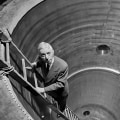This is equivalent to about 8 years of average exposure to background radiation. Nuclear medicine imaging uses small amounts of radioactive drugs and images of how those drugs move around the body. This helps doctors see how the body works. In contrast, x-rays or CT scans show what your body looks like (that is, early diagnosis is often possible with nuclear medicine, since changes in function often occur before changes in the Unlike computed tomography or x-ray devices, nuclear medicine imaging devices do not emit radiation.
The nuclear medicine pharmaceuticals used emit “gamma rays” that allow tracking the progress of radioactive pharmaceuticals within the body. Keep in mind that the radioactive material used disappears (breaks down) in a short time. Slovic's fundamental study in 1987 showed that the general public may have fundamentally different ideas about the risk derived from nuclear technology compared to experts in the field, even when nuclear technology was compared to daily activities, which were quite risky in nature. The challenge is even more difficult when it comes to illiterate patients who can see doctors and other nuclear medicine professionals with immense respect and admiration and, therefore, feel that they cannot be challenged.
But if there is any reason to believe that an x-ray, CT scan, or nuclear medicine scan (such as positron emission tomography) is the best way to detect cancer or other diseases, the person will most likely receive more help than the small dose of radiation can harm. National specialist societies play a key role in ensuring the safe and effective practice of nuclear medicine for both patients and staff. In fact, it's up to nuclear medicine professionals to educate their colleagues at an appropriate level and then communicate impartially with patients. This is particularly relevant, since in both groups most patients received information on radiation exposure from nuclear medicine images through hospital leaflets.
Further observational and qualitative studies are needed in collaboration with patients to assess patients' understanding and preferences in communicating radiation exposure from nuclear medicine images. In general, the amount of radiation from nuclear medicine procedures is similar to that of other radiological procedures and natural background radiation. The amount of radiation exposure from an imaging test depends on the imaging test being used and the part of the body being tested. The principle of consent to undergo a nuclear medicine procedure is based on a detailed understanding of the risks and benefits of the procedure in question.
The benefits of the nuclear medicine procedure are relatively easier for the nuclear medicine professional to handle. At this time, there is no formal mechanism to record and track a patient's cumulative radiation exposure, as is the case with staff. In nuclear medicine, the radiation risk of routine nuclear medicine testing is generally perceived to be very small, but limited.
Nuclear Safety






Leave Message